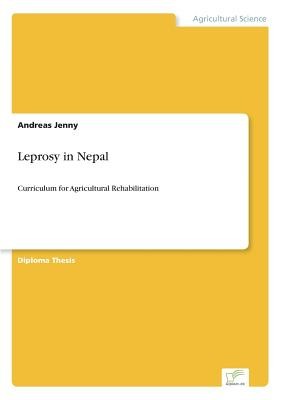
- Išsiųsime per 10–14 d.d.
- Autorius: Andreas Jenny
- Leidėjas: Diplom.de
- Metai: 1998
- Puslapiai: 140
- ISBN-10: 3838606396
- ISBN-13: 9783838606392
- Formatas: 14.8 x 21 x 0.8 cm, minkšti viršeliai
- Kalba: Anglų
- Extra -15 % nuolaida šiai knygai su kodu: ENG15
Atsiliepimai
Aprašymas
Inhaltsangabe: Abstract: Leprosy, a communicable disease, is one of the most feared and stigmatised diseases in the world. This disease is an important cause of permanent and progressive disability when it is not treated in an early stage. Leprosy control is an instrument to find and treat all existing leprosy cases in a certain area, to bring them under treatment in order to prevent the disabling consequences of the disease. It is essential to consider the cultural, the social, the political, and the economical aspects in the context of leprosy in Nepal to meet the real need of each individual patient. Due to the agricultural background of almost 93 % of Nepal's population, this field needs special attention as a tool for adequate rehabilitation. This paper aims to provide a solution providing a concept for agricultural leprosy rehabilitation. In chapter five rehabilitation strategies for clients with agricultural background are lined out regarding the specific situation in Nepal. Possibilities for the integration of agricultural topics in occupational therapy are discussed, as well as agricultural business creation suitable for disabled clients. Chapter six contains two curricula. The first curriculum deals with a kitchen garden training in occupational therapy and the second curriculum with a curriculum for a beekeeping training as a business creation measure. Inhaltsverzeichnis: Table of Contents: List of Figuresiv List of Picturesiv List of Mapsiv Tableiv List of Abbreviationsv Acknowledgements and Prefacevi 1.INTRODUCTION1 2.HISTORICAL BACKGROUND2 3.MEDICAL ASPECTS OF LEPROSY4 3.1Prevalence4 3.2Epidemiology5 3.3Treatment6 3.4Leprosy Control6 4.LEPROSY IN NEPAL8 4.1The Country8 4.1.1Geography8 4.1.2People9 4.1.3Government and Administration10 4.1.4Economy11 4.2The Context of Leprosy in Nepal12 4.2.1Cultural Aspects12 4.2.2Social Aspects14 4.2.3Political Aspects16 4.2.4Economical Aspects17 4.3The INF Leprosy Control Project (IEXTRA 15 % nuolaida
Kupono kodas: ENG15
Akcija baigiasi už 3d.13:15:56
Nuolaidos kodas galioja perkant nuo 10 €. Nuolaidos nesumuojamos.

- Autorius: Andreas Jenny
- Leidėjas: Diplom.de
- Metai: 1998
- Puslapiai: 140
- ISBN-10: 3838606396
- ISBN-13: 9783838606392
- Formatas: 14.8 x 21 x 0.8 cm, minkšti viršeliai
- Kalba: Anglų




Atsiliepimai